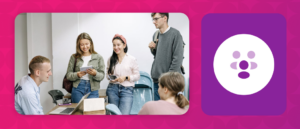Table of contents
ToggleHave you ever wondered how the brain learns? As we advance in understanding neuroscience, new perspectives are emerging on how we can harness the brain’s innate abilities to improve how we acquire and retain knowledge. In this sense, one of the most interesting concepts is that of brain-based learning.
What is brain-based learning?
This educational approach is based on the understanding of the human brain and neurological processes, to design much more effective and optimal learning strategies. According to brain-based learning, each person has a unique brain and learning is a complex process that involves the interaction of different brain areas. It seeks the use of educational methods and practices that are aligned with the way the brain processes, organizes and retains information.
Some of the key principles of brain-based learning include the importance of engaging both the right and left hemispheres of the brain, the relevance of emotions in the learning process, the role of context and meaning in information retention, and the importance of focus and attention in consolidating learning.
6 brain-based learning strategies applied to e-learning
In the field of e-learning, this approach plays a very important role, as it uses the latest findings from neuroscience to help us design much friendlier and more effective learning experiences. Taking into account the principles about how brain-based learning works, here are some learning strategies that improve retention and meaningful learning:
1. Spaced repetition and distributed practice
This strategy is based on the application of short learning sessions spread over an extended period of time, rather than a single learning session which is longer. For example, 3 learning sessions of 15 minutes each, spread over 1 hour are more effective than a single 1-hour learning session. This happens because the distribution of learning and its subsequent repetition strengthens long-term memory and the learning of new concepts.
Putting this strategy into practice requires planned study sessions and the distribution of both physical and virtual content. Multimedia resources can also be helpful for this method.
2. Fragmentation
This strategy is based on grouping information into small fragments that are easy to understand. Information can be divided into different categories, but you should always have a thread linking them. For example, when learning a language, learning can be divided between colors, numbers, and letters.
A good method to apply this strategy is microlearning. Through small fragments or training sessions of no more than 15 minutes, information is easier to digest.
3. Generative learning
The third strategy focuses on activities such as creating, teaching something, or experiencing it in real-life contexts. This practice reinforces learning, as it improves comprehension, memory and helps to discover possible knowledge gaps.
In e-learning there are different methods that allow you to apply this strategy, such as blogs, forums, debates, and interactive videos.
4. Recovery practices
This strategy consists of demonstrating learning autonomously, for example, through the use of questionnaires or tests. It is a method that allows learners to put information into practice, giving the student the opportunity to self-correct based on their mistakes or successes. In e-learning, assessments and self-learning exercises are ideal for this, as they provide immediate feedback. A good example of these are pairing exercises.
5. Metaphors and metacognition
Metaphors and metacognition are two strategies that appeal to the human need for narratives, analogies and reflection. Through these methods, the brain finds it easier to understand an unknown process since actions such as asking questions, adopting different perspectives and making decisions are involved. In this sense, linked scenes or decision-making scenarios offer the student different routes within the content that allow them to learn through realistic experiences.
6. Collaborative learning
Group activities and those that involve talking to others enhance learning. In fact, 20% of what we learn we do through the experience of others, and one way to encourage this is through activities in which the student is able to reflect on what has been learned and highlight their doubts and difficulties.
For this, online learning platforms offer the ideal medium for collaboration, through training activities and real time communication tools.
By taking into account these strategies, it is possible to enhance learning, improve skills and knowledge, acquire greater mental dexterity and improve the productivity of both students and those in charge of training. Ready to put these strategies into practice?














